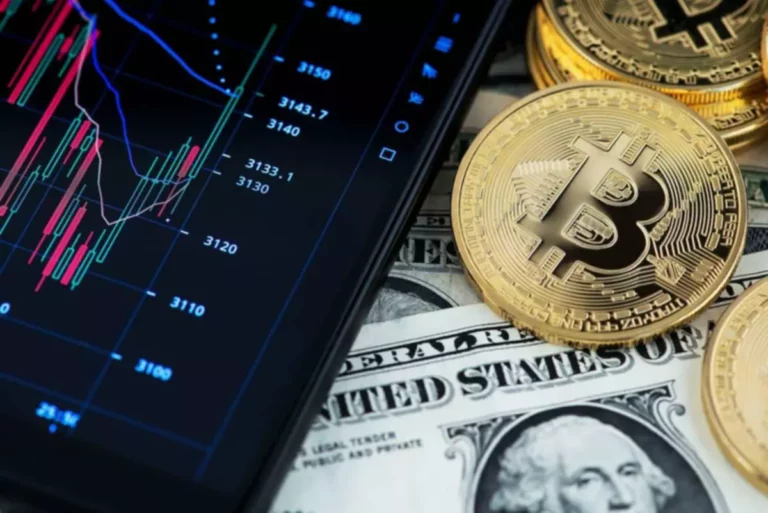What is USDT? All About Tether Stablecoin Cryptocurrency
Overall, stablecoins offer a number of advantages over other cryptocurrencies. They provide a more stable and predictable store of value, which makes them more suitable for use as a medium of exchange. They can also offer users a way to hedge against the volatility of other cryptocurrencies or fiat currencies.

True USD follows the Tether protocol; and currently has $400 million backed tokens. Now imagine owning a cryptocurrency what is a stablecoin and how it works that is safe, low cost and asset backed. Yes asset backed, looks unreal right but it’s possible with stablecoins.

In the crypto world, stablecoins provide traders with a safe harbor, allowing them to reduce the risks without having to leave the crypto ecosystem. The main advantage of cryptocurrency-backed stablecoins is their decentralized nature, with no need for a custodian to control disbursement and exchange of funds. All of the network members participate in the lifecycle of the issued stablecoins which provides higher liquidity. The monetary policy and governance are therefore in the hands of voters who take part in supporting market price stability. Stablecoins are classified as asset-backed and non-asset-backed (seigniorage). The first type can be backed by fiat, other cryptocurrencies, or commodities.
They’re called stablecoins, and they’re playing an important role in cryptocurrency markets. However, DGX is not accessible in some of the biggest cryptocurrency markets such as China, the US, and Japan due to legal troubles. Furthermore, the scope of DGX as one of the best stablecoins in the fintech sector is limited as gold-pegged stablecoin. Separate tokens are responsible for creating the DGX token for retaining the identification of the gold bar against which it is pegged.
Second, they can provide users with a way to invest without physically holding the items. However, the downside is that the value of the commodity can still fluctuate, meaning that commodity-backed stablecoins are not completely free of volatility. Fiat currencies, such as the US dollar or the Australian dollar, don’t experience this level of price volatility.
The example of Tether shows this difficulty because the solvency and legitimacy of the company were publicly questioned several times in the past. In essence, stablecoins are not merely another digital currency variant; they’re a strategic innovation designed to infuse stability into the crypto world. They’re shaping the future, offering market participants a reliable medium for transactions and redefining the boundaries of financial services. As you delve deeper into the world of cryptocurrencies, the significance and potential of stablecoins become undeniably clear. To buy stablecoins you’ll need an account with a crypto exchange or a digital wallet where you can buy crypto directly. Some services may not be available in all locations, so be sure to check whether the options you want are available where you live.
Fiat-backed stablecoins are usually backed by reserves of the fiat currency they are linked to, which ensures their stability. Due to strict regulations, there are very few cryptocurrency exchanges that support fiat cryptocurrencies. However, the use of stablecoins offers a solution to this problem because they serve as a crypto-fiat trading pair.
Although all stablecoins aim to maintain a pegged ratio to a given fiat currency, the assets they hold as collateral may determine the stability of their respective pegs. Dai is a decentralized stablecoin pegged to the US dollar, but not backed by fiat currency reserves. Instead, Dai is backed by several other cryptocurrencies that are locked into smart contracts on the Ethereum blockchain.
On the contrary, it enjoys a reasonable market capitalization of $7.5 billion if not close to that of Tether. It can ensure the assurance of reliable levels of transparency about details of its cash reserves. The collateralized loans on MakerDAO serve as the foundation for creating DAI. Furthermore, DAI has a promising advantage as one of the best stablecoins with the identity of ‘multi-collateral’ DAI. By ‘multi-collateral,’ you can ensure that different types of crypto assets could help in creating DAI. DAI is basically a stablecoin cryptocurrency offered by MakerDAO, a decentralized independent organization.
- Algorithmic stablecoins are cryptocurrencies that use software algorithms to automatically adjust their circulating supply, aiming to achieve a stable value, usually pegged to a certain asset like the US dollar.
- Over time, inflation can erode the purchasing power of the underlying asset to which a stablecoin is pegged.
- Neutrino USD is a stablecoin linked to the US dollar and backed by the WAVES token.
- Crypto traders rely on USDT as a stable store of value when trading between different digital assets.
- However, we may receive compensation when you click on links to products or services offered by our partners.
Havven’s Nomin or eUSD are also ERC-20 tokens serving as representatives of a new generation of stablecoins in 2020. The stablecoin depends on Havven’s escrow technology by leveraging the Havven https://www.xcritical.in/ tokens and the Ethereum mainnet. Havven community members derive eUSD by placing Ether or ETH in escrow. The ETH generated from fees on eUSD goes to the users who have placed the ETH in escrow.
To curb down the risks of inflation the government only prints a fixed amount of money that is usually backed by collateral. Stablecoins continue to come under scrutiny by regulators, given the rapid growth of the around $130 billion market and its potential to affect the broader financial system. In October 2021, the International Organization of Securities Commissions (IOSCO) said stablecoins should be regulated as financial market infrastructure alongside payment systems and clearinghouses. The proposed rules focus on stablecoins that are deemed systemically important by regulators, those with the potential to disrupt payment and settlement transactions. As of late July 2023, Tether (USDT) was the third-largest cryptocurrency by market capitalization, worth more than $83 billion.
To maintain this “peg”, stablecoins can be backed by external assets or use algorithms that dynamically adjust their supply relative to their demand at a given time. Crypto’s total market capitalisation can rise and fall by billions of dollars a day. Even the top cryptocurrency—Bitcoin (BTC)—is subject to significant fluctuations in value. Another use for stablecoins is remittances; that is, transferring funds across international borders.
Experts say the DAI stablecoin is overcollateralised, which means that the value of cryptocurrency assets held in reserves might be greater than the number of DAI stablecoins issued. A stablecoin is a cryptocurrency whose value is “pegged” (meaning tied) to another asset—often a traditional fiat currency like the US dollar. For example, one unit of a stablecoin that’s pegged to the US dollar should always be worth $1. Dai (DAI) is the fourth largest stablecoin by market cap and is pegged to the U.S. dollar on a one-to-one basis. Unlike the three stablecoins mentioned above, DAI is not backed by U.S. dollars but by a combination of various crypto assets.


